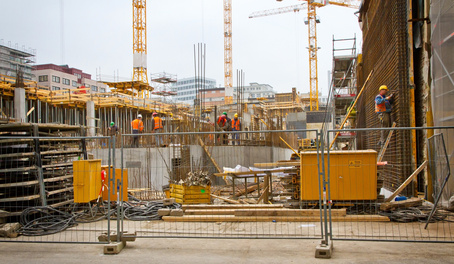Home > The news of EUROGIP and occupational risks in Europe >

In the first half of 2016, the number of serious and fatal injuries occurring in the construction sector increased by 14% and 56% respectively compared with the first half of 2015.
This can be explained by the economic recovery and an increase in the number of building starts reported and the number of asbestos removal projects reported (+10% and +16%) compared with the same period in 2015.
Moreover, the weeks before the summer holidays are a high-risk period. On many worksites, the workers strive to complete the work on time or work especially hard before a break of several weeks.
General civil construction and the construction of non-residential premises account for the largest number of serious injuries (42%) and fatal injuries (50%), followed by earthworks, electrotechnical equipment installation work, demolition, plumbing and painting, which account for between 4% and 7% of serious injuries and between 10% and 20% of fatal injuries in the sector. Construction therefore ranks among the most dangerous sectors of activity.
The three main causes of hospitalization, permanent injury and death are:
- falls from a height or on the same level (tripping), which cause more than half of the injuries;
- impacts with objects, products or other material items, which concern around one-quarter of the casualties;
- contact with machines, tools and vehicles on construction sites, for 15% of serious injuries.
In one-quarter of the injury cases examined by the Labour Inspectors (Inspectie SZW), no direct supervision was provided on the construction site. It is therefore essential that those directly responsible, such as the project manager, should rectify dangerous behaviour by correcting, for example, a worker who is not wearing his helmet, who removes the protective cover from a machine to make it easier to use, who leaves objects lying around or who does not correctly plug up a hole in the ground, at the risk of causing falls or tripping.
“Construction sites are increasingly large, and are becoming an agglomeration of managers, employees, temporary workers and self-employed workers, which increases the risk of accidents. In addition to Dutch, many languages are spoken, such as Polish, Romanian and English, and this can cause communication misunderstandings. We increasingly observe that risk prevention responsibilities are not clearly defined on construction sites. We can also regret the lack of clear collaboration agreements between the various stakeholders”, explains Marga Zuurbier, Director of the Working Conditions Department of Inspectie SZW.
To find out more (in Dutch)









